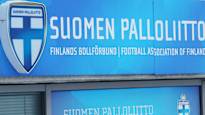The highest number of support, nearly 500 million, in 2001-2025, has received sports federations, of which the Football Association accounts for the highest share of the Football Association.
Grants received by sports organizations are a significant part of the state’s sports budget and the amount is not low. In 2025, the Ministry of Education and Culture granted the organizations EUR 41 million as general grants.
In addition, organizations may apply for discretionary aid for, inter alia, for physical activity or organizing major events, and, for example, EUR 6.5 million was granted for top-level efficiency efficiency subsidies this year.
– Thus, the share of organizations’ grants has been about one third of the state’s annual sports budget, and they are very important players when it comes to implementing the goals of sports policy, says a leading researcher Kati Lehtonen From Jyväskylä University of Applied Sciences.
The Ministry of Education and Culture (OKM) has classified sports organizations into four groups when distributing general grants. Between 2001 and 2025, they have received a total of over EUR 900 million.
The most support, or nearly 500 million, has received sports federations, of which the Football Association accounts for the largest, or about 45 million.
The second highest number of support has been given to service organizations with a support pot of nearly 200 million. Currently, the Olympic Committee and the Paralympic Committee have been appointed as service organizations in the classification of OKM.
Other sports organizations such as the School Sports Association, the Finnish Latu, the NMCA Sports Association, have been granted by nearly 150 million general grants and nearly 90 million regional organizations.
In 2001-2025, the total amount of general grants granted to sports organizations increased from EUR 25 million to about EUR 40 million by 2010 and have remained at that level since.
The number of assistance organizations has decreased over the years. In 2001, there were 129 general grants and 115 this year.
The information is from the Jyväskylä University of Applied Sciences maintained by the sports organization database maintained by the University of Applied Sciences, which collects annual information on the distribution of general grants for organizations and the number of operational and trustees in a sexual basis.
National and regional sports organizations that have been granted form a diverse entity that has very different goals. They may include sports clubs and other local associations, national organizations, personal members and vocational training organizers.
– However, the most attention is usually paid to the public federations or service organizations such as the Olympic Committee. These organizations are, for example, in the media spot because of sports activities, whether it is competition, ethical issues or sports management. The rest of the organizations with over 40 general grants will be very neglected. It may not even be known about their existence, says Kati Lehtonen.
The main activities of the organizations have remained largely unchanged during the review period, but there are also differences.
– Therefore, the overall impact of organizations’ activities in relation to the objectives of sports policy is also challenging, Lehtonen continues.
– In the future, it can be seen that the extremes of the organizations receiving the assistance will look apart. While there should be a debate on the goals of Finnish top-level sports and where the paint is set, a large proportion of sports organizations are progressing towards well-being and health promotion. From the point of view of the overall coordination of sports policy and the setting of goals, this set of over a hundred organizations is a rather complex entity, says Lehtonen.
